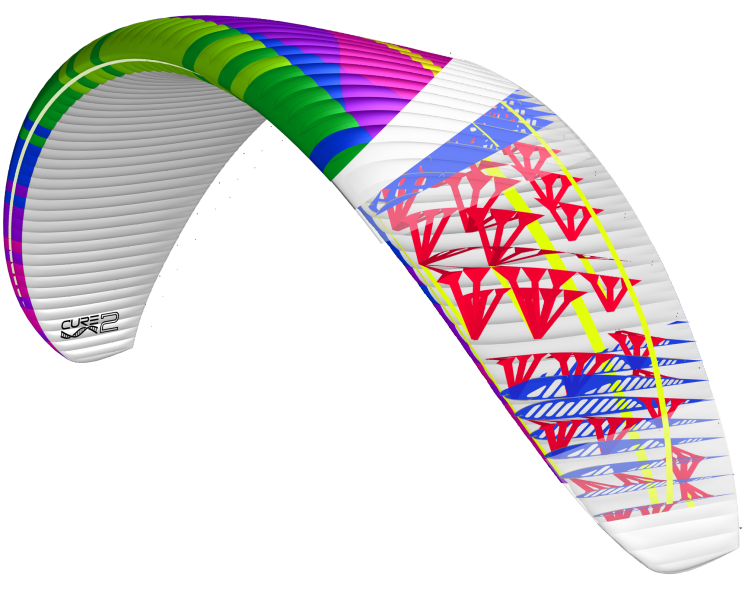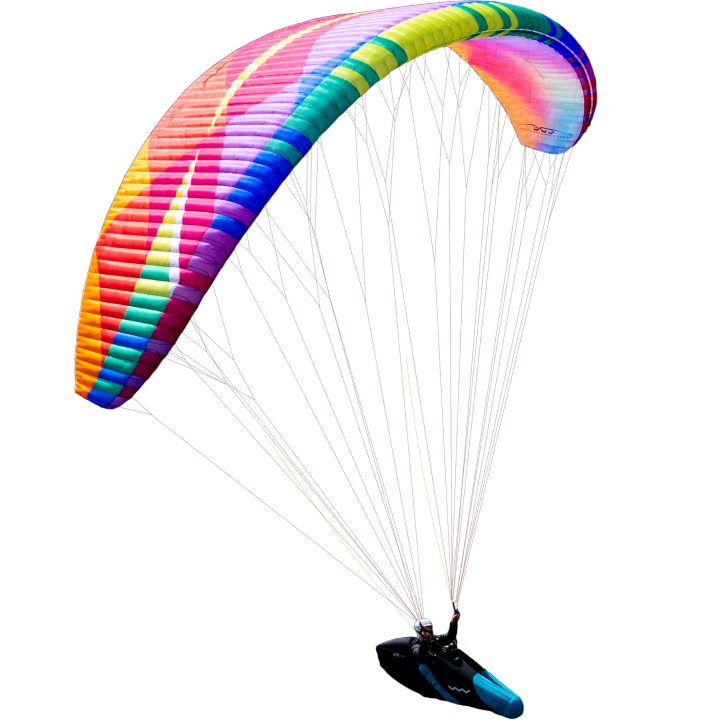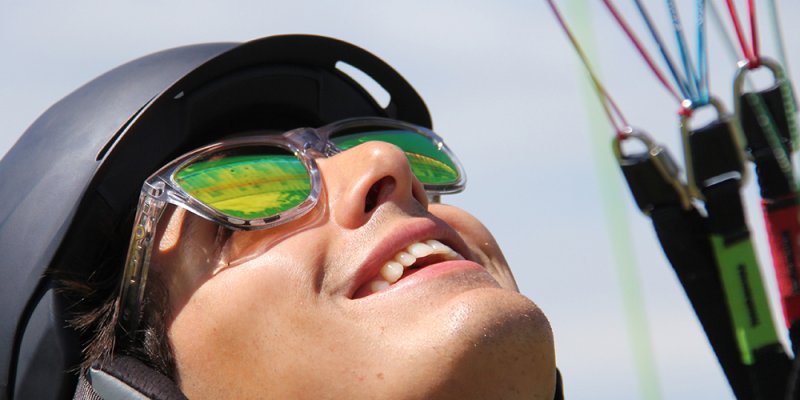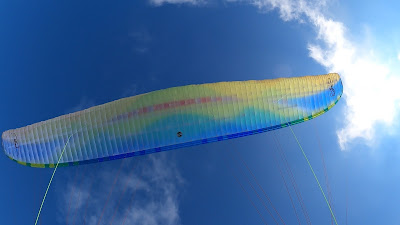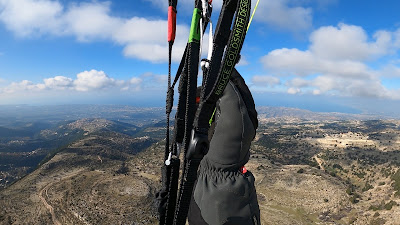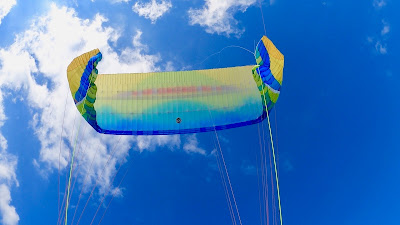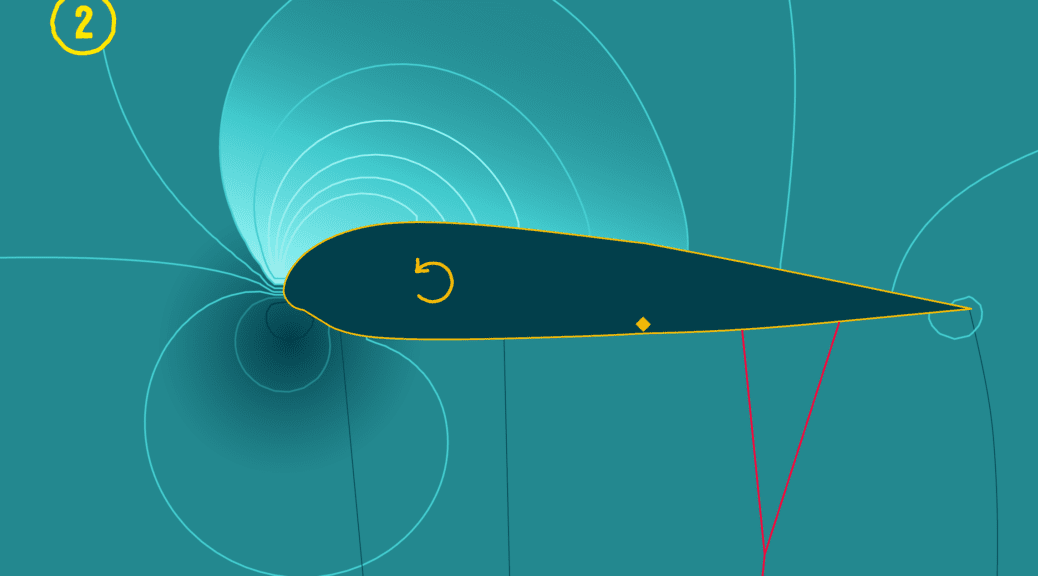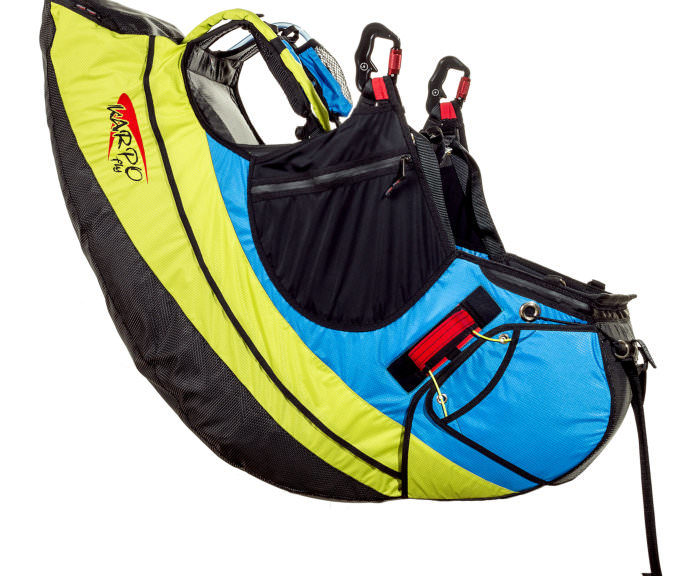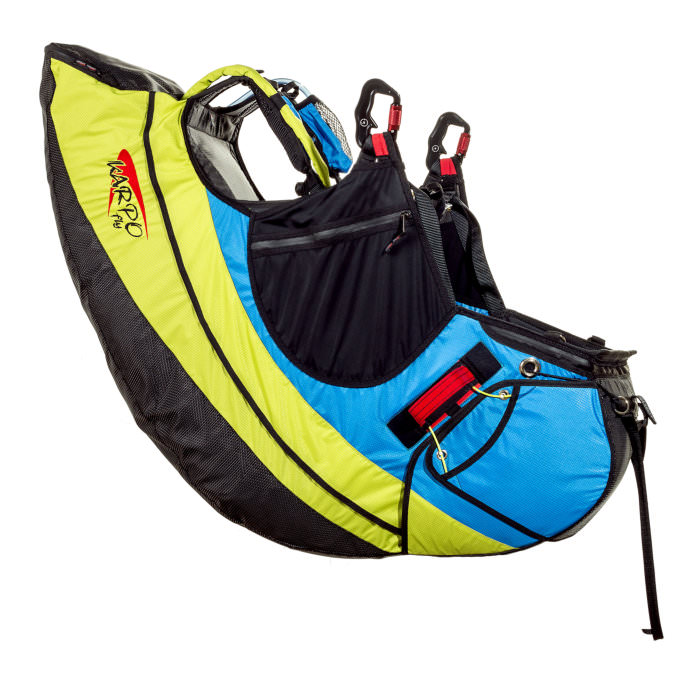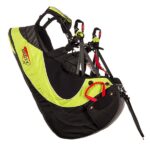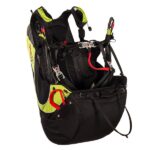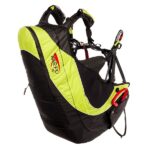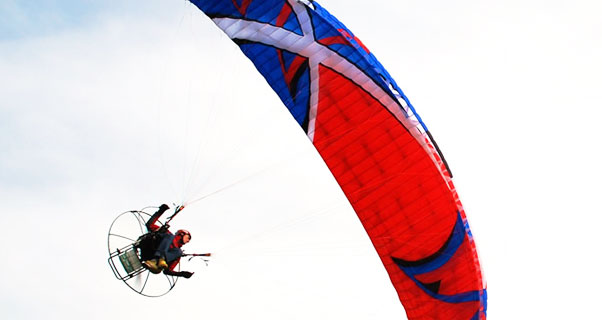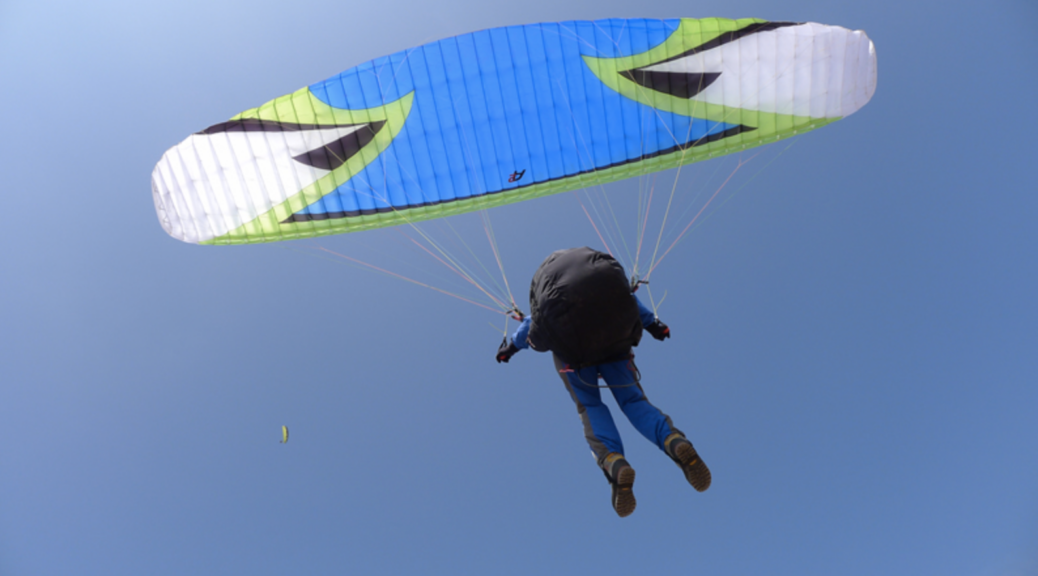HIER DAS AKTUELE VIDEO AUF: www.PARAGLIDING.TV :
OZONE GEO 6 & SOLOS
Produktinfo
Leichter, mehr Leistung und mehr Fun als je zuvor!
Der neue Geo6 überzeugt mit dem höchsten Leistungsgewinn und zugleich der größten Gewichtseinsparung, die es in der Geo-Geschichte bislang gab. Moderne Konstruktionstechniken und ein cleverer Einsatz der Materialien haben dazu beigetragen 350 Gramm Gewicht im Vergleich zu seinem Vorgänger einzusparen. Moderne Konstruktionstechniken und ein cleverer Einsatz der Materialien haben dazu beigetragen 350 Gramm Gewicht im Vergleich zu seinem Vorgänger einzusparen.
Das ist für Piloten, die sich eine sehr zugängliche XC Leitung gepaart mit geringem Gewicht und Packvolumen wünschen, der ideale Reise- und Abenteuerschirm in der Intermediate Klasse. In Kombination mit dem SOLOS Gurtzeug bringt es als komfortable und leichtgewichtige XC Ausrüstung weniger als 7 kg auf die Waage!
NEUE TECHNOLOGIE
Wir haben das SharkNose Profil verbessert, indem wir die Zellöffnungen modifiziert haben um den Innendruck bei allen Anstellwinkeln zu verbessern, und haben G-Strings eingesetzt wie sie auch der Rush 5 hat. Diese Bänder (G-Strings) tragen dazu bei, besonders im beschleunigten Flug eine klare Öffnungsform aufrechtzuhalten und unterstützen das Wieder-Füllverhalten – Klapper öffnen sich schneller und mit weniger Höhenverlust. Die Anströmkante zeigt auch ein doppeltes 3D Shaping und profitiert von Modifikationen der Segelspannung und der Bahnenform um den Luftfluss in diesem aerodynamisch kritischen Bereich zu klären.
NEUE INNENSTRUKTUR
Dank der spannweitig verlaufenden Bänder und modifizierten querlaufenden Öffnungen in den Rippen, die Kohäsion, Spannung und Luftzirkulation verbessert haben, hat sich die Gleitleistung des Geo6 in aktiver Luft und im beschleunigten Flug erheblich verbessert. Zudem werden Turbulenzen besser absorbiert und das Segel deformiert sich weniger.
MATERIALIEN
Die Innenstruktur des Geo6 ist technisch so gestaltet, dass der Flügel langlebiger ist. Die Oberfläche ist aus einem Mix aus Dominico 20D und Porcher 27 Classic gefertigt, und das Untersegel nur aus Porcher 27 Classic. Der Geo6 ist um 1,55 Kilogramm leichter als der Buzz Z6 und um 350 Gramm leichter als sein Vorgänger – ohne Einbußen in den Bereichen Belastbarkeit und Lebensdauer!
START & FLUG
Vor allem ist der Geo6 einfach und angenehm zu fliegen. Dank eines leichteren Segels, besserer Effizienz, und einem kohäsiveren, agileren Gefühl sind das Starten und Bodenhandling nie einfacher gewesen. In der Luft ist das Handling intuitiv, super agil und macht einfach Spaß. Die Bremseinwirkung ist progressiv – mit einem präzisen Gefühl. In der Thermik und in aktiver Luft kreieren die strukturellen Verbesserungen einen komfortablen und dennoch aussagekräftigen Flügel.
Durch sein geringes Gewicht und Packvolumen ist der Geo6 der ideale Schirm für Piloten, die sich auf Reisen oder Hike & Fly Missionen befinden und generell etwa 30-50 Stunden im Jahr fliegen und für erfahrene Piloten, die sich einen Flügel mit einem hohen Maß an passiver Sicherheit wünschen, die ideale Wahl.
Farbwahl

Bestellinfo
Lead time is currently unavailable. Contact your dealer for more information or to place an order.
Lieferumfang
OZONE offers a range of backpack choices when you order your wing. To change the type of backpack that will come with your wing, please speak with your OZONE Dealer.
Dein OZONE Schirm wird standardmäßig mit dem folgenden Zubehör ausgeliefert::
130 Liter Leichtrucksack, Innensack, Gleitschirmgurt, Speed Bar, OZONE Aufkleber, Reparaturtuch, Ozone Schlüsselanhänger.
You may choose to add something to your order, such as: Saucisse Bag (video) (concertina packing bag), Easy Bag (quick stuff sack), or OZONE Clothing and Accessories.
Anfragen
Fotos
Spezifikationen
| Größen | xs | s | ms | ml | l |
|---|---|---|---|---|---|
| Anzahl der Zellen | 48 | 48 | 48 | 48 | 48 |
| Projizierte Fläche (m2) | 18.7 | 20.3 | 21.8 | 23 | 24.5 |
| Ausgelegte Fläche (m2) | 22.2 | 24.1 | 25.8 | 27.3 | 29 |
| projizierte Spannweite (m) | 8.23 | 8.57 | 8.87 | 9.12 | 9.4 |
| ausgelegte Spannweite (m) | 10.69 | 11.14 | 11.52 | 11.85 | 12.22 |
| projizierte Streckung | 3.62 | 3.62 | 3.62 | 3.62 | 3.62 |
| ausgelegte Streckung | 5.16 | 5.16 | 5.16 | 5.16 | 5.16 |
| Flügeltiefe (m) | 2.63 | 2.74 | 2.84 | 2.92 | 3.01 |
| Gleitschirmgewicht (kg) | 3.26 | 3.49 | 3.67 | 3.85 | 4.1 |
| Certified Weight Range (kg) | 55-70 | 65-85 | 75-95 | 85-105 | 95-115 |
| Recommended Flying Weight (kg) | 60-70 | 70-84 | 82-94 | 90-104 | 100-114 |
| LTF / EN | B | B | B | B | B |
Material
- Obersegel: Dominico N20D / Skytex 27 Classic
- Untersegel: Skytex 27 Classic
- Rippen: „Dominico 20D_32 / Skytex 27 Classic
- Galerieleinen: Edelrid 8000U
- Mittleres Stockwerk: Edelrid 8000U
- Stammleinen: Liros PPSL/Edelrid 8000U
DOWNLOADS
Persönliche Farbwahl
OZONE COLOUR REFERENCE (W/W/W/W)
ABOUT CUSTOM COLOURS
Ozone encourages you to customize your own personal colour combination for your wing. Customization generally incurs a small fee. Once you’ve decided you can share your design with your friends, or if you are ready to order, send it to your local Ozone dealer to check if there is a charge and place the final order.
Please note that because the glider will be built specifically for you in the Ozone factory, payment must be received before production can begin.
FABRIC COLOURS AND UV RESISTANCE
Please be aware that the colour you see on your screen may not accurately represent the actual fabric colour. Given the wide varience in monitor calibration and the fabric appearance in different light and colour combinations, it is impossible to perfectly represent fabric colour on screen. If you have any doubts about the colours, look at photos of various wings on our website to see them in different light and colour combinations or contact your local dealer to see the fabric in person.
All of the fabric that we use undergoes extensive testing in prototype colour phase to ensure colourfastness, mechanical stability, porosity, and general longevity before we put it into production. Once our fabric is in production, every meter of it is rigorously inspected upon arrival in our factory, and fabric which does not pass our stringent quality control standards is returned to the manufacturer. We are frequently asked, „Which colours last the longest, or have the best UV resistance?“ All of the colours that we stock score between 4 and 5 on a scale of 1-5, with 5 being the highest possible rating for longevity.
The new GEO 6 is the lightweight version of the Buzz Z6. It delivers high amounts of passive safety in a lightweight adventure wing with True Performance throughout the entire speed range.
Modern construction techniques and a clever use of materials have saved 350 grams of weight compared to its predecessor, and all of the performance gains made in the Z6 project have been directly passed on.
20% Less Line Drag
Refined Shark Nose Profile
G-String Leading Edge
Double 3D Shaping
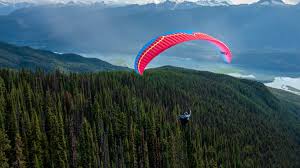




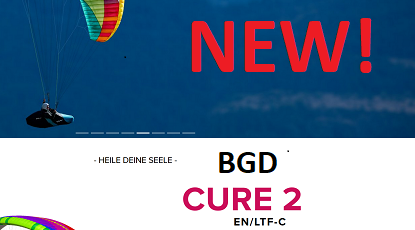
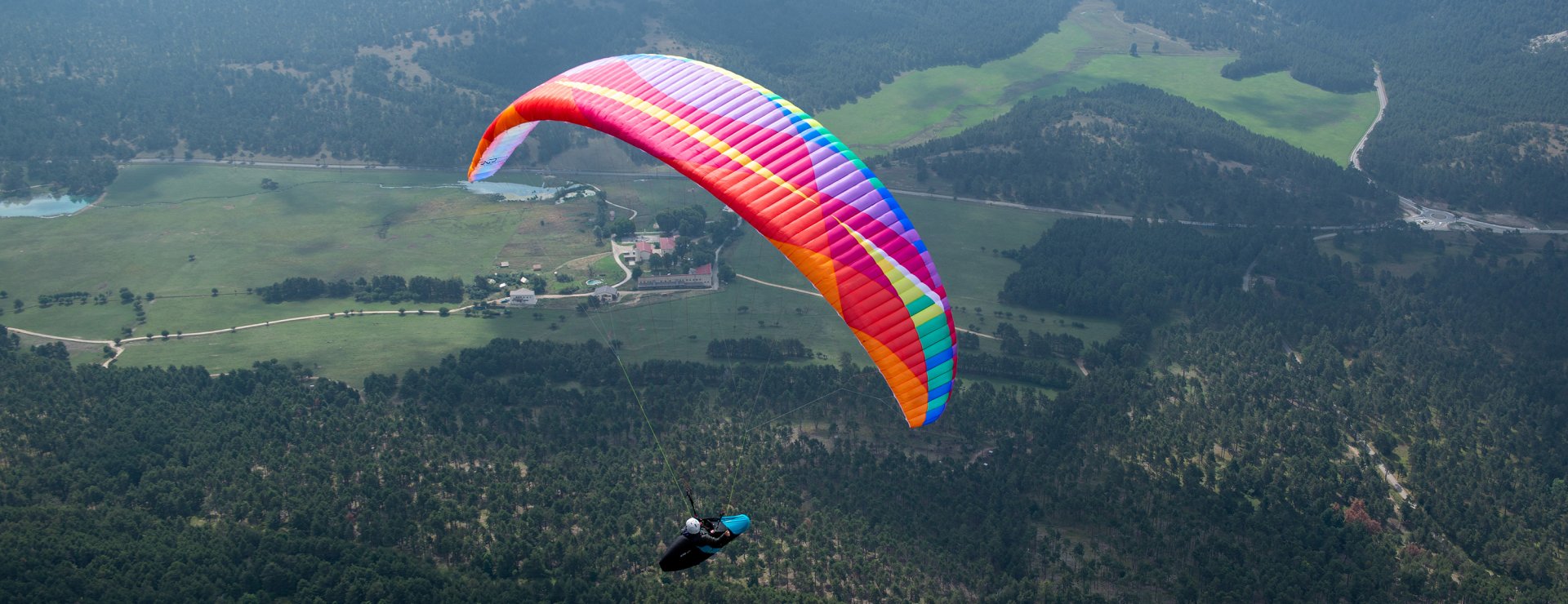
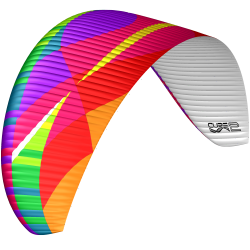 Alkaline
Alkaline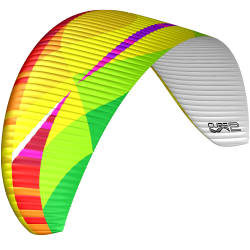 Halogen
Halogen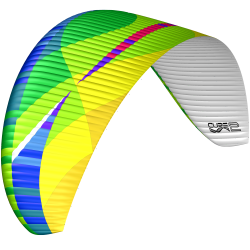 Enzyme
Enzyme